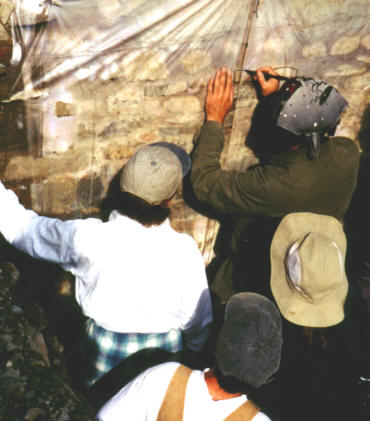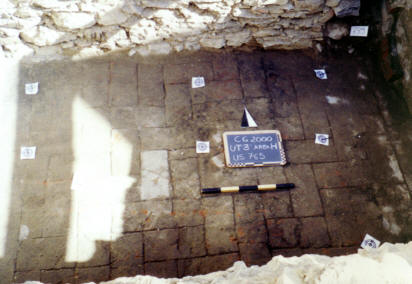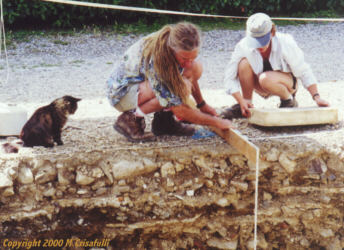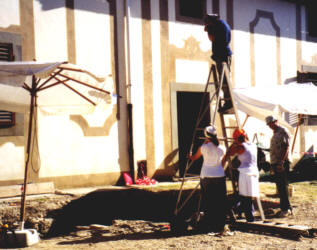| Although | archaeology has come a long way since Schliemann plowed through Troy, most methods have simply been refined over the years. Several modern techniques used on this project have speeded up field work without compromising the documentation accuracy. |
|
|
 |
| Drawing profiles is one of the most tedious of archaeological tasks, normally done with string, a plumb, a level, and several rulers. Each point of interest is carefully measured and plotted on grid paper and then the plotted points are joined. At right, Tommaso, the filed director, demonstrates an alternative tracing technique. A plastic sheet is draped and secured over the trench profile, and items of interest are carefully traced on the plastic with an indelible marker. |
|
|
|
Photography has long been an important part of archaeology, but drawing has always been required for accurate recording of trench details. Digital photography and computer tools have now improved the process. The archaeologist can see photographic results almost instantly and the photos can be quickly transferred to a computer in the field. By placing targets in the area of interest and recording their precise locations, photometric software can correct the photograph for lens and perspective distortions. A drawing can then be made on the computer directly from the digital image. The process is so fast that errors in the process can be discovered and corrected before the targets are removed. The picture below, right, shows the trench bottom prepared for photography, with the targets in place around the floor of the trench. The absolute location of one target were precisely measured. Two relative positions of each target were measured so that the coordinates of each target can be calculated by trigonometry. The measurements are recorded for input to the pre-processing and photometric programs. The actual documentation photograph was without the sun to assure even lighting of the surface. Below left, we see Tommaso taking a photo of the shaded trench from a ladder. the digital camera lets him see the result immediately so he can adjust the exposure if necessary. The computer for photo processing is set up in a nearby outbuilding of the estate. |
|
|
 |
This page and its contents
© Copyright 2001 Michael & Karen Crisafulli. All rights reserved.



